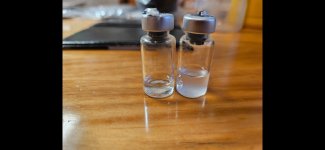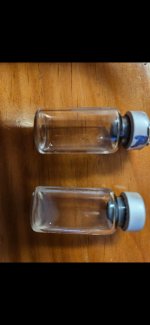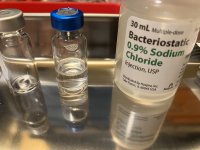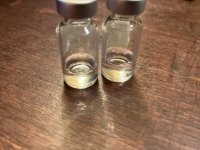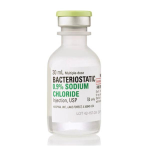Interesting results. There was a discussion in another thread that peptides like tirzepatide came from Eli Lily in a saline solution, but no one was sure on whether the same would be true for retatrutide.
Decided to try a little experiment here with tirzepatide, so I mixed up two vials, one with bacteriostatic saline, and the other with bacteriostatic water. Both came out crystal clear. But there was an oddity I discovered when trying to filter:
I have some overkill 0.02 micro filters, and the solution with bacteriostatic saline would not push through the filter at all, not a drop. I made a red mark on my hand trying to push the syringe and nothing would come out. I switched over to a 0.22 micron filter, and the saline tirz solution went through fine. I then tried the same with the bac water tirz solution, and I was able to push through the 0.02 micron filter no problem (thanks to zpped for the suggestion on the vent needle, btw).
So I'm thinking it must be one of two things: 1) the salt isn't dissolved well enough in the saline solution (seems odd, coming from Pfizer), and it clogs the filter, or 2) there's some micro-aggregation of the salt and peptide, enough to clog a 0.02 filter, but not so much that the solution looks cloudy like the reta solution.
I'm also aware this is probably useless information, but I killed a lot of $ in filters with this silly experiment, so figured I'd report something.
I wonder if when reta hits the mainstream market if we'll see it in a saline solution or something else. Very interesting that it might be incompatible with saline, whereas tirz is fine/sorta fine with saline.
Pic: this is just the reconstituted saline tirz solution in the original vial before filtering.
View attachment 7358

